Text to order is starting to take a real foothold in the ecommerce space, revealing itself to be one of the best ways to take advantage of m-commerce (mobile commerce).
Mobile commerce is the branch of ecommerce that involves shopping through a mobile device, typically a smartphone, and is expected to make up 44% of ecommerce sales by 2024.
While businesses have used SMS marketing (texting) for years for customer service, appointment reminders and branding, text to order opens up a new way to make text shopping a native experience.
Need a success story?
In 2020, a canned wine brand called Bev launched a text-to-order service in its home county of Los Angeles. In the first quarter, sales soared, and they credit 350% of growth directly to the text-to-order service.
What Is Text to Order?
Text to order is SMS marketing made into a commerce channel. Companies sell products through text, with no need for external links or checkout processes. Buyers simply send a text stating what they want to buy, and the order is placed through stored shipping and billing information.
Text to order is new enough that its exact terminology has yet to be established. In addition to “text to order,” it goes by text to buy, text to shop, shop by text, reply to buy and even text to get.
Some stores send products over text, to which a consumer can reply with something like “yes” or “2 boxes” to place an order. Others allow repeat customers to start the conversation if they want to place a new order.
Either way, it offers the ultimate user convenience: no external links, no logging into an account, no refilling your information, and no dealing with a slow website or poor mobile interpretation (though your website should be fast and optimized for mobile).
How Does Text to Order Work?
Text to order works by having current and potential customers sign up on your website or through text. They provide their name, shipping address, billing information and any other information relevant to your products, such as recommendation preferences or clothing sizes.
To make the process less intimidating, you can wait to ask for billing until they make their first order.
Once you store customer buying information under their phone number, they can place orders through text, setting the fulfillment process in motion without leaving the text conversation.
There are two styles of text to order:
- Automated
- Conversational
The automated approach is when a company sends out an offer, and the customer replies with whether they want to buy or not. Simple.
WineText is a successful example of the automated approach. They send consumers a daily wine deal over text, like the ones pictured below. To order, buyers respond with the number of bottles they want. To take no action, they don’t respond.

The conversational approach allows for a more natural conversational flow. Users and the company may exchange more texts as the user can ask questions or initiate the conversation themselves. If the system is unsure how to respond, a person takes over.
Dirty Lemon uses a conversational approach to establish a more personal brand and build trust.

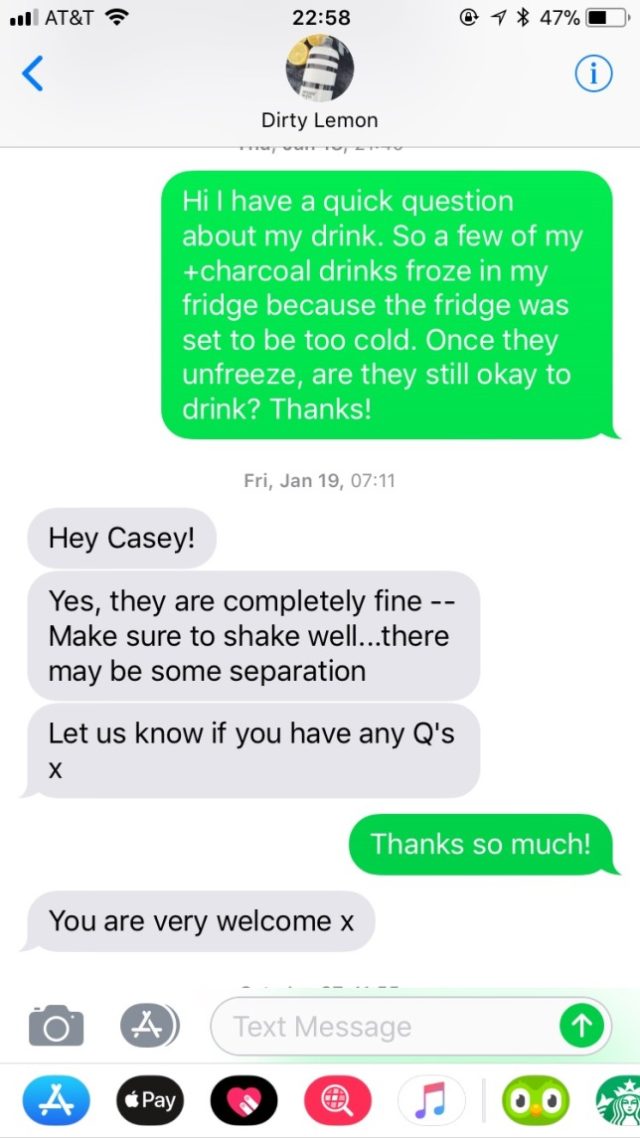
We discuss WineText and Dirty Lemon in more detail below.
Why Text to Buy Is So Damn Awesome Sells
Customers’ texts are a valuable space to occupy, but much of text-based marketing still relies on linking users to an ecommerce website to take action.
Similar to the one-click phenomenon, text to buy increases sales by speeding up the purchasing process. Amazon first invented one-click technology to allow users to store their shipping and billing information so they could buy at the click of a button. With text shopping, purchasing a product requires nearly no effort or thought.
Essentially, text to buy rocks because it:
- Shortens the customer journey: Fewer steps in your customer journey means fewer chances to drop off.
- Makes checkout frictionless: One or two texts are all it takes. Consumers love convenience.
- Allows impulsive buying: When all you have to do is type “yes” to buy, it’s a lot easier to give into impulsive desires.
- Is personal by nature: Texts are personal and historically kept to those we have a relationship with. Using text correctly fosters deeper customer connections.
- Is natural to users: We use our phones for everything, and since the pandemic, ordering through mobile devices is more normal than ever.
- Makes trying new products easy and convenient: During a quick trip to the store, it’s faster to stick with what you know. Product experts can make recommendations through text at a discount. WineText is a great example, selling high-quality wines you might not otherwise know a thing about.
- Makes restocking a breeze: For products that people repeatedly buy, like food and beverages, it’s easier to send a text than add it to a grocery list and have to go shopping later.
- Eliminates competition: Congrats—if you’ve made it into a buyer’s texts, you own your conversation thread. There’s no competition, whereas ads or other websites may entice buyers online.
- Opens up competitive pricing: Some ecommerce sites that sell through text use it to offer discounts on products that aren’t selling elsewhere. Other text-based stores save on marketing and business costs by selling directly through text and pass those savings along.
Ecommerce Stores Using Text to Buy
Text to buy is not entirely new, and several ecommerce-based and ecommerce-supported businesses are successfully using it to reap money. Here are some examples, some of which have been texting successfully since 2015.
Dirty Lemon
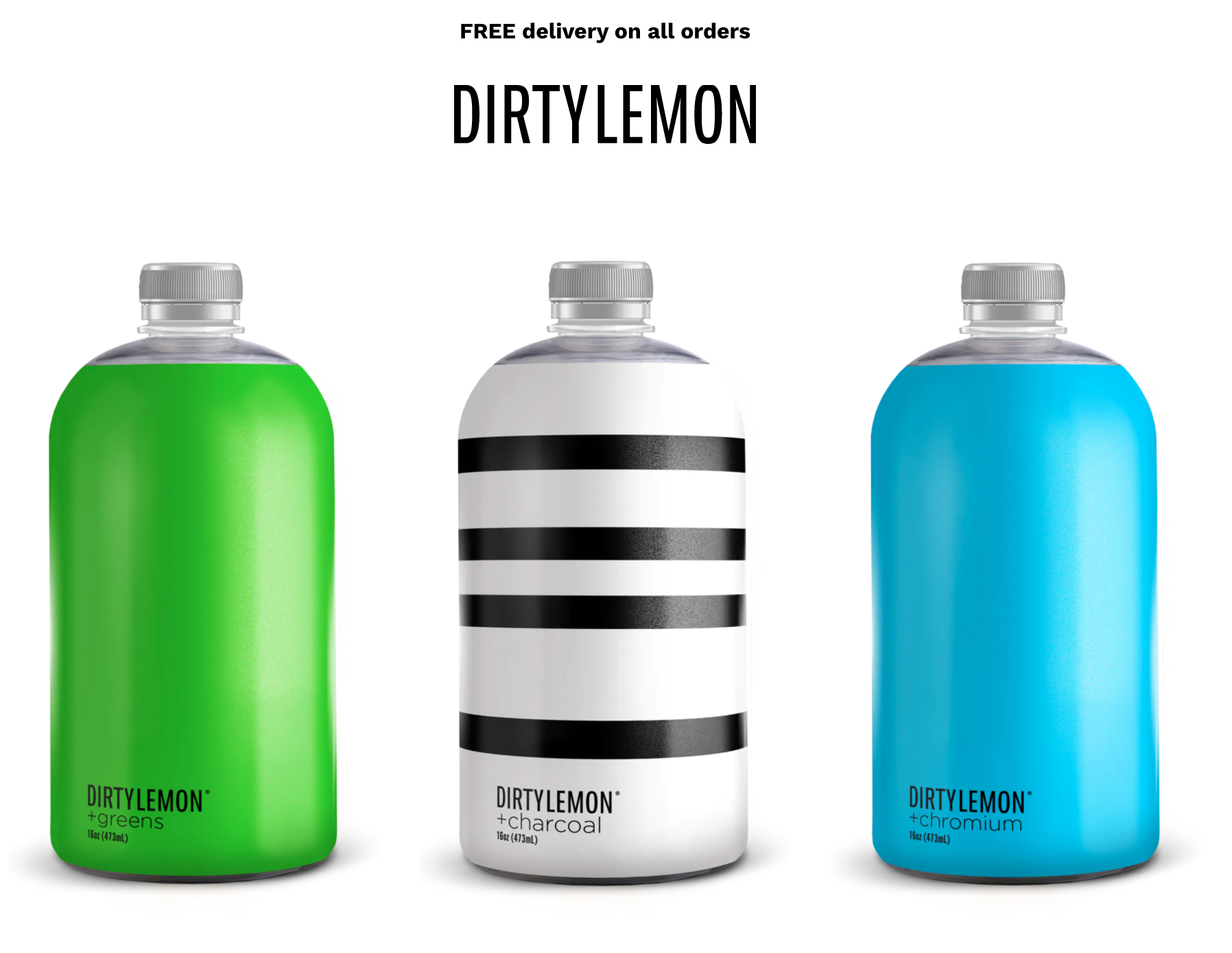
Dirty Lemon is a health-based beverage brand that originally sold exclusively online and encouraged buyers to place orders through SMS. By 2017, the store was processing 50,000 texts a month and bringing in millions.
When you go to place an order through Dirty Lemon’s website, they prompt you to enter your phone number with this message:
“First, enter your phone number below to begin your checkout — If you have placed an order with us in the past, this will pull up your account. No user name or password required! (For new customers, you will enter payment and address details in the next step.)”
From there, buyers can order new products or ask customer service questions through text.
Need to update your payment method or address? You can text them for that too.
Now, Dirty Lemon is partnered with Walmart in an effort to grow brand awareness but hopes customers will continue to make their repeat purchases online or via text.
WineText
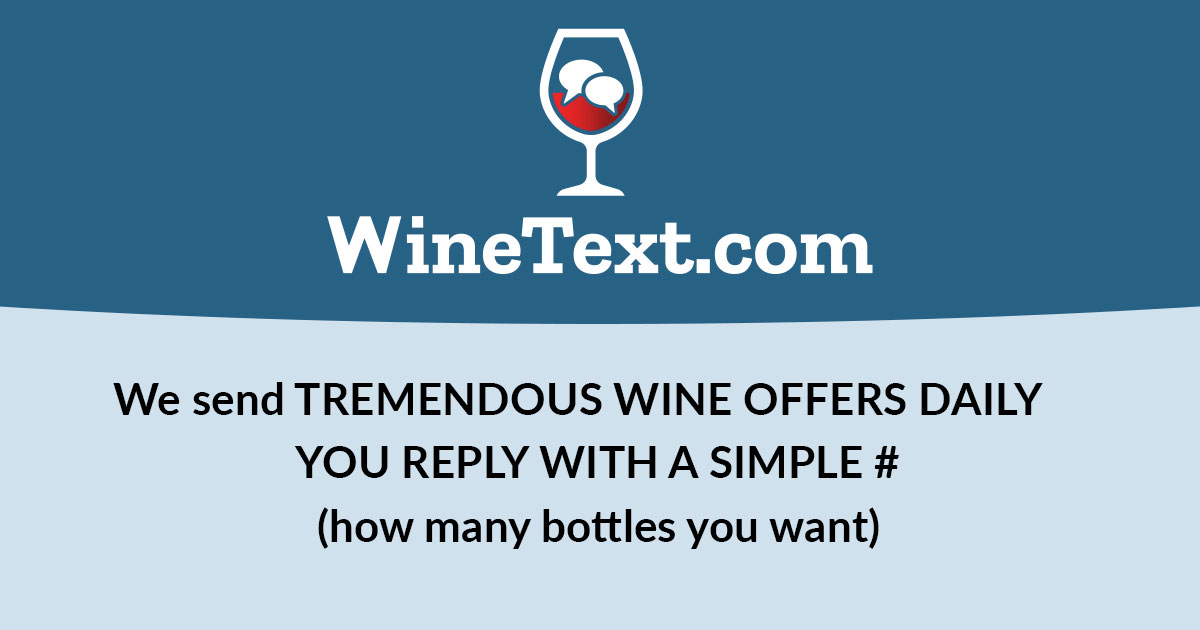
WineText takes an even simpler, automated approach to text sales.
Every day, WineText sends its SMS list a single wine deal. The message showcases a great bottle of wine at a hefty discount with a description of what makes the wine special. Each deal lasts 24 hours until they send the next text.
Customers sign up on the WineText website, where they provide their address, card information and phone number. When they receive a text with a deal they like, they reply with the number of bottles they want.
Company founder, Gary Vaynerchuk, says that WineText’s SMS list “of nearly 9,000 customers consistently outperforms Wine Library’s email list of 400,000 by a magnitude of 9x.”
To encourage list growth, WineText offers free shipping to buyers who refer another customer.
11th Hour

For forward-thinking company 11th Hour, a text-based approach makes sense. 11th Hour sells discounted food that is about to go to waste due to a surplus of inventory but is still safe to eat.
The fast-paced nature of text alerts is perfect for products that come and go, and a more futuristic style fits the better future they’re trying to create.
A little something special that we like about 11th Hour is that it has buyers take a quick quiz to personalize their product recommendations, and they’re transparent about the frequency of texts you can expect.
BeautyText
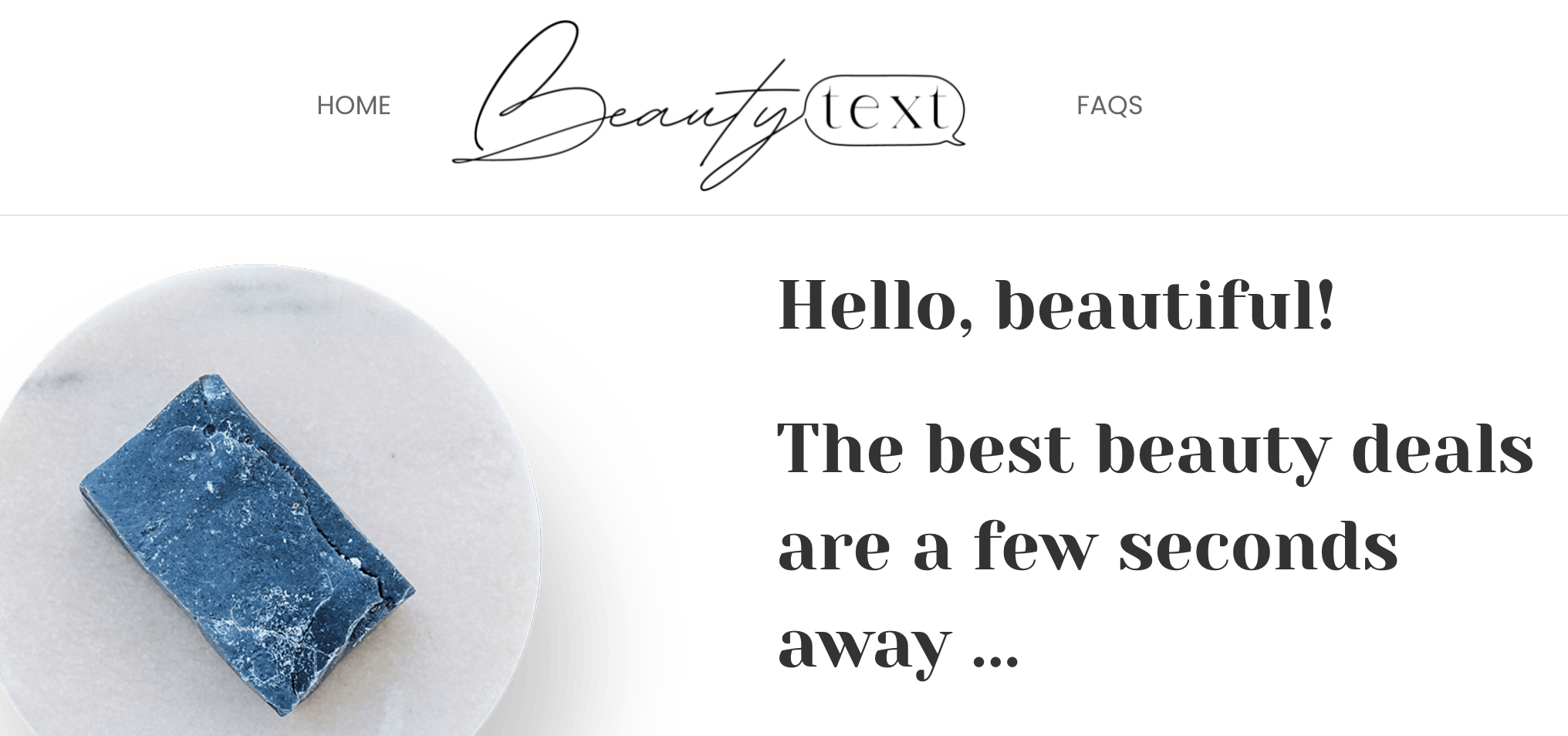
We had to toss this one in the mix to prove that it’s not all food in the text-to-order arena. BeautyText sells beauty products at a discount from a variety of brands. Those who join enjoy learning about new products and brands, as well as paying lower prices.
Fellow Drops
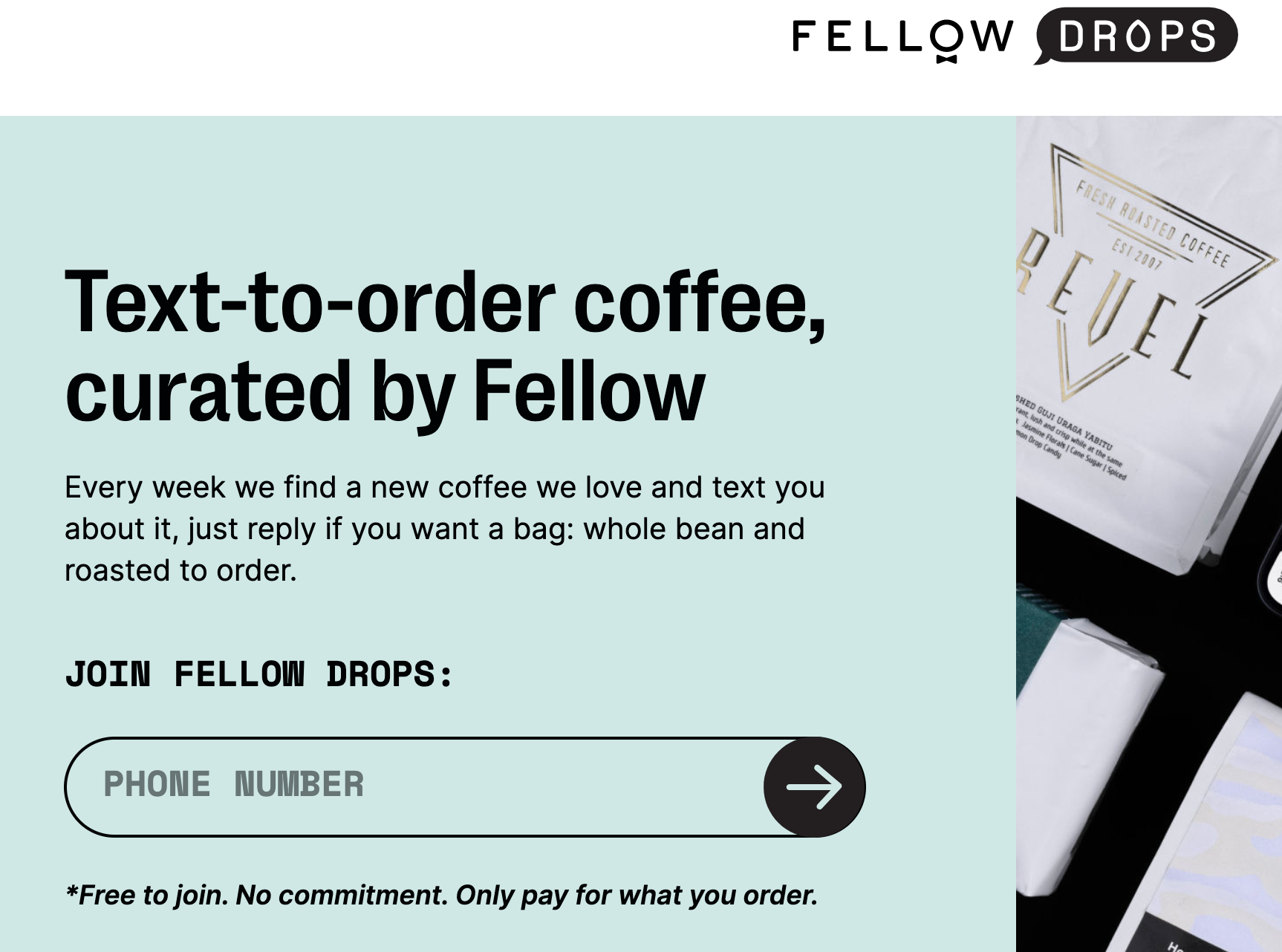
In addition to Dirty Lemon, Fellow Drops goes to show that not every text shop relies on discounted products either.
This text-based shop sells coffee in the same manner that WineText sells wine, but instead of placing the emphasis on discounts, it’s on the wide selection of great coffee you can discover through their tasting panel’s weekly selection.
Stefan’s Head

Stefan’s Head is a unique ecommerce-only store that sells a variety of things that “Stefan” likes, namely fashion, accessories, music and such. Despite the name, Stefan’s Head was founded by three individuals in 2015.
According to the website:
“Stefan’s Head is a text-message list for people who like cool stuff. Think of this as a mix between a curator, a shop, and a magazine – all delivered over a text from a friend (that’s me, your friend).”
Walmart
The biggest telltale sign of text to order beginning to hit the mainstream was when one particular retail giant hopped on.
In October, Walmart began testing a text to order solution that works like so: You text the items you want, Walmart adds them to your cart, and you checkout via text whenever you want.
Called Text to Shop, the feature is only available for Android enrollment at the time of this article.

Should You Use Text to Order?
Text to order is a strategy to consider if you are a direct-to-consumer brand or looking to become one to some degree. A direct-to-consumer (DTC) brand is a brand that sells to consumers through their own ecommerce site and cuts out the middleman (department stores, marketplaces).
You don’t have to be 100% DTC to sell through text. Many brands sell in stores and later join ecommerce; others start online and begin selling in stores to grow their audience.
Brands that sell subscriptions, have natural reorder cycles, or have buyers who regularly frequent their store are an excellent fit for text to order.
You may also consider using text to order to offer your overstock inventory at a discount.
How to Set Up Text Ordering
1. Determine Your SMS Strategy
Start by settling on an SMS commerce strategy. You’ll need to decide how to integrate text ordering into your current operations and marketing.
Consider the following questions:
- How will text to buy support my business, and what portion of sales should come from my SMS channel?
- What products will I sell by text and when?
- Will I send product recommendations to customers, or will I wait for them to text my business?
- If I send product recommendations, how often will I?
- Will I offer other text services, like customer service, as well?
- Should I use automated texting or conversational texting?
Depending on the complexity of your SMS strategy, you may want to use a CRM (customer relationship management tool) to store customer-specific data for handling segmentation and product recommendations.
2. Choose Your Third-Party Services
Once you have laid down your strategy, you can select the services you’ll need to bring it to life (unless you plan on developing your own SMS commerce applications).
You will want to consider the services that you will use to:
- Capture and store credit card data safely
- Send and receive texts
- Process, track and fulfill orders
While you can use a separate service for all pieces of the puzzle, there are SMS services that handle everything in one place, like TextRetailer.
TextRetailer can help you:
- Build SMS sign-up forms
- Send text to order campaigns with automation capabilities
- Manage and segment your SMS subscriber lists
- Track campaign orders
3. Grow your Text Subscriber List
There are a few ways you can grow your SMS subscriber list:
- Add a form or pop-up on your website
- Add the option to subscribe during checkout on your website
- Promote your text service to your email list
- Add QR codes on your packaging and products that direct to a sign-up page
We particularly love the checkout and QR code options because they target highly qualified leads, but all are great methods.
Remove Hesitation and Concerns
Since shop by text is still relatively unfamiliar to many people, it’s only natural that they would feel hesitant to hand out their phone number. This is doubly the case for handing out credit card information before they’ve even seen what you offer.
You can help remove consumer concerns by making the following clear:
- They have no obligation to buy anything ever—or take any action at all
- They can unsubscribe from texts at any time
- How often you plan on texting them
- How you keep their personal and credit card information safe
Fellow Drops makes users feel safe with a simple, branded message: “You can lurk forever and leave us at any time.”
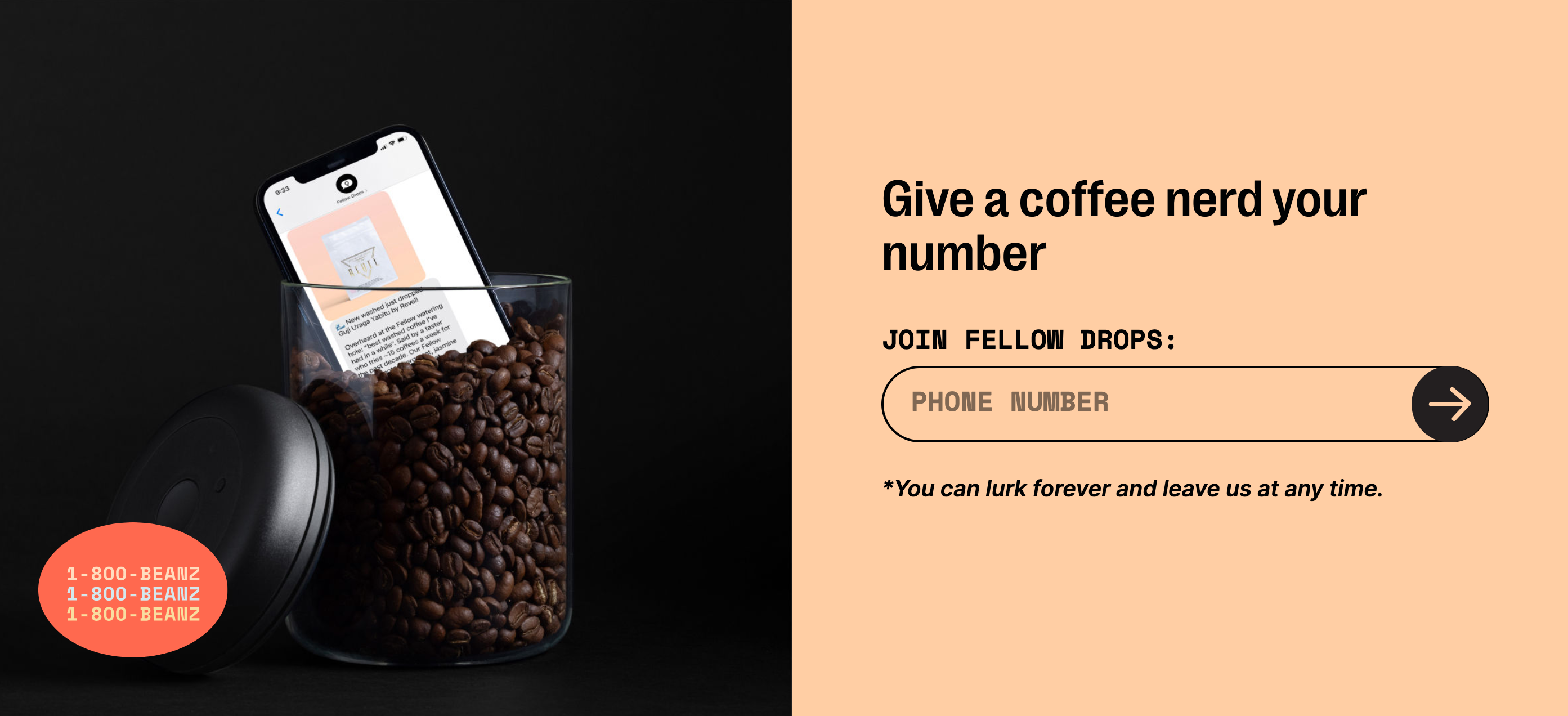
WineText makes it clear where you enter your card information that “You won’t be charged now, you are only charged when you buy wine.”
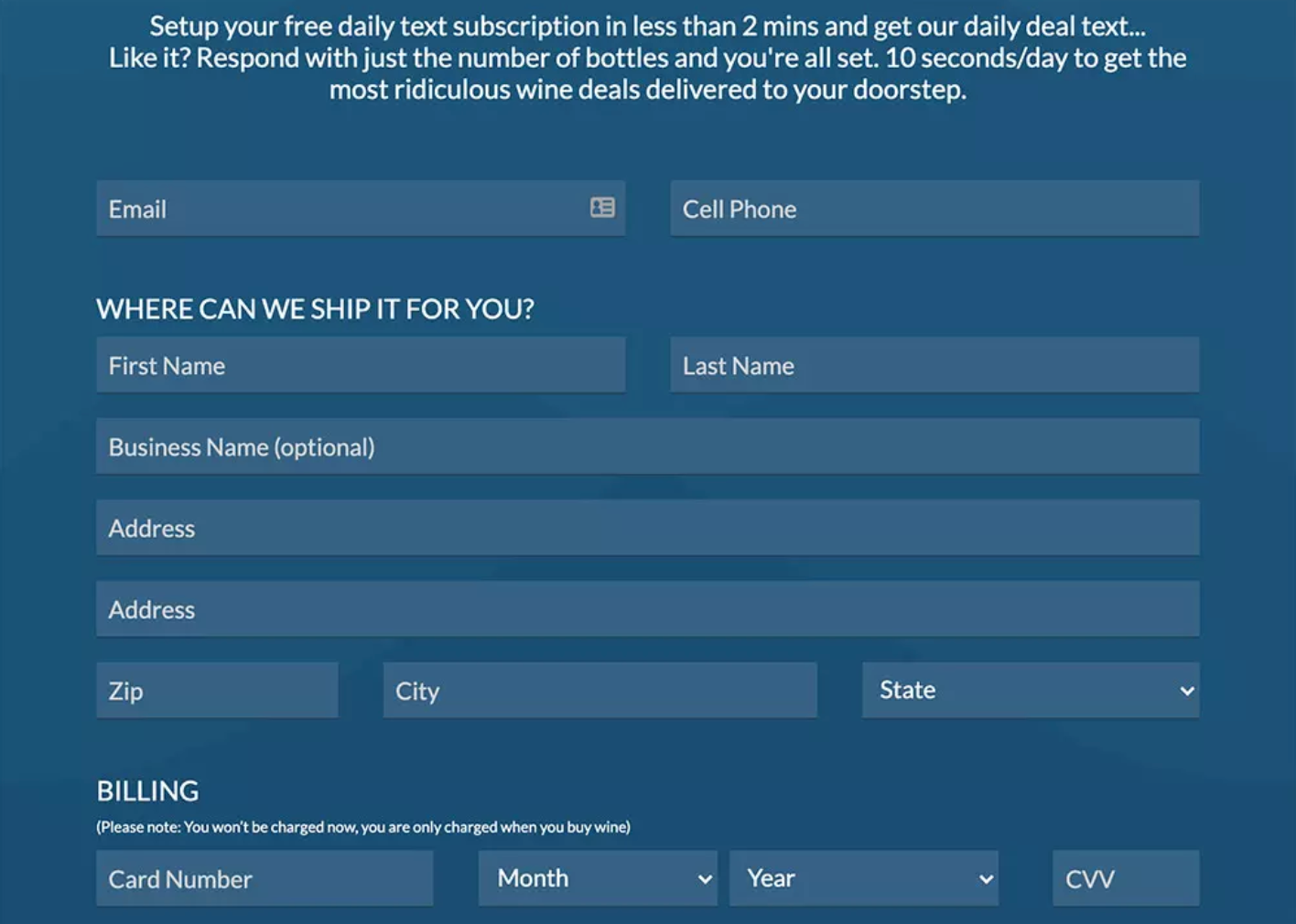
Meet Compliance
We are not lawyers, but it’s worth mentioning that your sign-up methods need to meet compliance. This means obtaining user consent to use their information in the ways you will use it. Be sure to include:
- Your business name
- The types of messages you will send
- How often you will send them
- Text message and data rate notices
- A link to your terms and conditions and privacy policy
- Opt-out instructions
It is wise to seek legal counsel for any consumer data you collect.
4. Collect Campaign Metrics and Evaluate Success
Are your texts selling? Making connections? Is your list growing?
These are the kinds of questions you’ll want to ask to continue optimizing your strategy.
Decide on the key performance indicators that impact your goals and indicate success. Then set regular intervals to review how they are doing and evaluate if a change is needed or opportunities present themselves.
Maybe you should text less often or recommend different products. Perhaps certain messages get better responses than others. If customers unsubscribe within hours of joining, perhaps expectations or onboarding could be set up better.
Remember: a Text Is Copy Too
Texting is casual by nature, and it can be easy to forget when texting a customer a product recommendation that a text is still marketing copy.
It may be shorter than a blog.
It may be more informal than a landing page.
But the words you send will directly impact whether the person receiving your message buys your product.
Invest in the words you text to customers the same way you would the words on your website.
Text to Order Isn’t a Website Replacement
While text to order may be an effective way to reach into your customers’ hearts (and pockets), it’s not meant to replace your website.
Your website is where you will convince potential sign-ups that you’re worthy of their trust and personal information. It’s where they go to learn about your business and the value you bring. It’s where many of your current customers will learn that you offer text to order.
To give up on a great website is to doom your SMS commerce strategy.
And if you use text to order to increase sales, having an experience-driven website will do the same.
It’s why text-based companies like Fellow Drop still have a branded website and why Dirty Lemon permits sales on theirs.
With that in mind, it’s time to decide if running a text shop will benefit your sales strategy, and if it will, to get ready.
Text shopping isn’t mainstream yet, but it’s getting closer.


